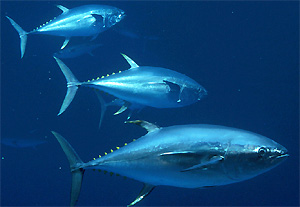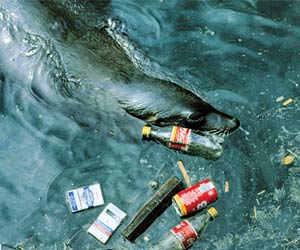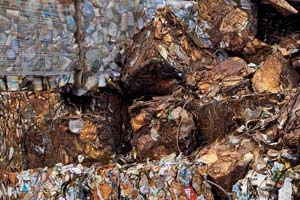
NOAA
A fascinating new study documents for the first time how mercury gets from smokestacks in Asia to tuna on dinner tables in America. Scientists sampled Pacific Ocean water from 16 sites between Honolulu and Alaska, then constructed a computer model linking atmospheric emissions, transport and deposition of mercury, and ocean circulation.
Their findings published in Global Biogeochemical Cycles show how mercury originating from fossil-fuel-burning plants and waste-burning plants in Asia falls into the Pacific Ocean near the Asian coastline. The mercury-enriched waters are then carried by large ocean currents east towards North America.
The study documents for the first time something of the mysterious process by which mercury becomes methylmercury in the ocean. The simple version: Mercury rained down from the atmosphere is taken up by phytoplankton living in sunlit waters. When these plankton die they rain down into the depths where they’re decomposed by bacteria. The process of decomposition turns mercury into methylmercury.
Methylmercury is an environmental neurotoxicant that rapidly bioaccumulates in the foodweb, eventually concentrating in top-tier predators like tunas and humans. Some 40 percent of human exposure to mercury in the US comes from eating tuna hunted in the Pacific Ocean. Pregnant women who consume mercury-laden seafood can pass on life-long developmental effects to their children.
Since the Industrial Revolution anthropogenic mercury levels in the atmosphere have risen threefold, with corresponding increases in terrestrial and aquatic ecosystems. This study found mercury levels in water samples rose an alarming 30 percent between the mid 1990s and 2006. That’s hardly the end of it though. The authors predict another 50 percent increase in the Pacific by 2050 if emission rates continue as projected.
Yet another reason to we can’t tread water on fossil fuels. Too bad Australia’s Kevin Rudd just did a spineless jellyfish backflip on climate change. As if the economy is disconnected from the environment.













